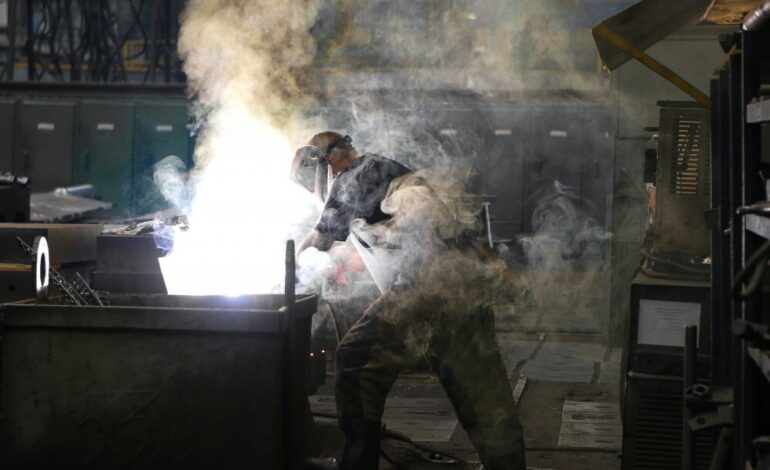A List Of Different Surface Treatment Solutions For Manufacturers

Surface treatment is usually a vital component of the manufacturing process. Engineers will usually require a surface treatment for appearance or anti-corrosion purposes for a portion of the entire part or product.
Surface treatment is a fantastic option, whether you are manufacturing a part from scratch or fabricating it. Surface treatment could also increase the functionality of an object by contributing mechanical or electrical properties.
Certain treatments will apply to specific metals, while others will work for just about any metal or surface.
There are various ways in which manufacturers will perform surface treatments for their manufactured objects. The following list showcases some of them:
Rotor Spray/Drying
The Coronavirus caused many manufacturers to consider their surface treatment processes seriously. Rotor spray systems and hot air drying solutions are among the most common options that have become popular due to the pandemic.
Rotor spray technology uses rotor discs to spray coating on metals evenly and uniformly. You can spray the coating on one or both sides of a metal substrate. At Corona pretreatment innovations, surfaces involve using high-performance electrodes for enhanced coating of a surface. They are excellent for enhanced glue adhesion and varnishing.
Their slim design will enable quick integration and easy retrofitting into production lines which is great for manufacturers.
Electroplating
Did you know that electroplating is when you pass a positively charged electric current through a solution containing dissolved metal ions while passing a negatively charged electric current through the metal surface to be plated? The result is the formation of a thin metallic coat on the metal’s surface.
Specific metals are used for the electroplating process, including gold, silver, zinc, chromium, nickel, cadmium, and tin. Manufacturers can electroplate the surface of any metal that can conduct electricity and enhance its performance.
Therefore electroplating cannot be done on most non-metallic objects unless they are good conductors of electricity.
Chemical Treatment
Metal is an element which means it can have a chemical reaction with other elements. If those elements are strong chemicals, manufacturers can use them to treat the surface of the metal.
Chemical treatment of base metals involves creating an ultra-thin film of sulfide or oxide by combining the metals with various reactive chemicals.
Black oxide is a material that manufacturers use for the surface treatment of steel parts. They utilize a process called passivation to remove free iron particles from the surface of the stainless steel.
Chemical treatment for surface treatment is for protection against corrosion, coloring metals, and preparing surfaces for painting.
Anodic Oxidation
When you have a light metal like titanium or aluminum, anodic oxidation is the best surface treatment method. Anodization is a standard process through which aluminum is coated to prevent corrosion. Still, anodic oxidation is slightly different – anodic oxidation involves creating oxide films on the surface of the metals through a process of electrolysis. The films are porous and excellent for aesthetic improvements because manufacturers can easily apply dyeing and coloring agents into the metal’s deeper layers.
Anodic oxidation can also be used to increase wear resistance if manufacturers want it. A specific version of anodic oxidation through which engineers can make an incredibly thick and tough ceramic coating on the metal’s surface.
Hot Dipping
As the name suggests, this is a form of surface treatment in which an object is dipped into a dissolved metal like zinc, aluminum, tin, or lead, resulting in the formation of a surface metallic film.
Hot-dip galvanizing is another process used by manufacturers to dip steel into a container with molten zinc.
Hot dipping is to prevent corrosion in extreme environments. You will often find items like guardrails on highways whose surface has been treated by hot dipping.
Vacuum Plating
Many metal surface finishing processes, including vacuum plating, use the high vacuum as part of the plating process. Some of the processes include vacuum vapor depositing, ion plating, and ion implantation.
Ionized metals, oxides, and nitrides require creation in a controlled environment. The manufacturers put the metal part into a vacuum chamber, and the metal will be accurately deposited onto the metal substrate.
Titanium nitrate is a surface treatment that is applied using vacuum plating. It will elongate the lifespan of high steel and carbide metal cutting tools.
Thermal Spraying
Thermal spraying is a form of surface treatment that involves using melted or superheated materials accelerated, collided, and mechanically bonded to a surface.
The metal or ceramic wire or powder feedstock is melted by injecting it directly into a flame. You can also dissolve it by injecting it into an electric arc or plasma.
Engineers often use thermal spraying to see increased friction as a desirable characteristic for an object or part. Manufacturers will also use it for protection against high temperatures, for example, a component necessary for heat management, such as a part in an air conditioning unit.
Painting

Painting is by far the most common surface treatment process. However, it is used differently in manufacturing than in other areas.
Manufacturers will typically use painting for surface treatment to improve the appearance and corrosion protection of an object. There are various ways and techniques to paint for surface treatment purposes, including spray painting, brushing, electrostatic painting, and powder coat paint.
Painting for surface treatment will include using a wide variety of paint formulations to protect metallic parts and objects in various environments. Some manufacturers will automate the painting of parts for surface treatment, with the automotive industry being the best example in this regard.
Painting by hand is often inconsistent; hence they use robotic arms to produce incredible consistency regarding surface treatment.
In conclusion, there are many types of surface treatment methods that manufacturers use. Some of them are standard, while others are proprietary. The methods outlined above are those you will find in almost every industry and are the most prevalent. Manufacturers can use them for different metals and materials. Engineers can also develop unique surface treatment techniques, which means that new and improved methods are always forthcoming.










